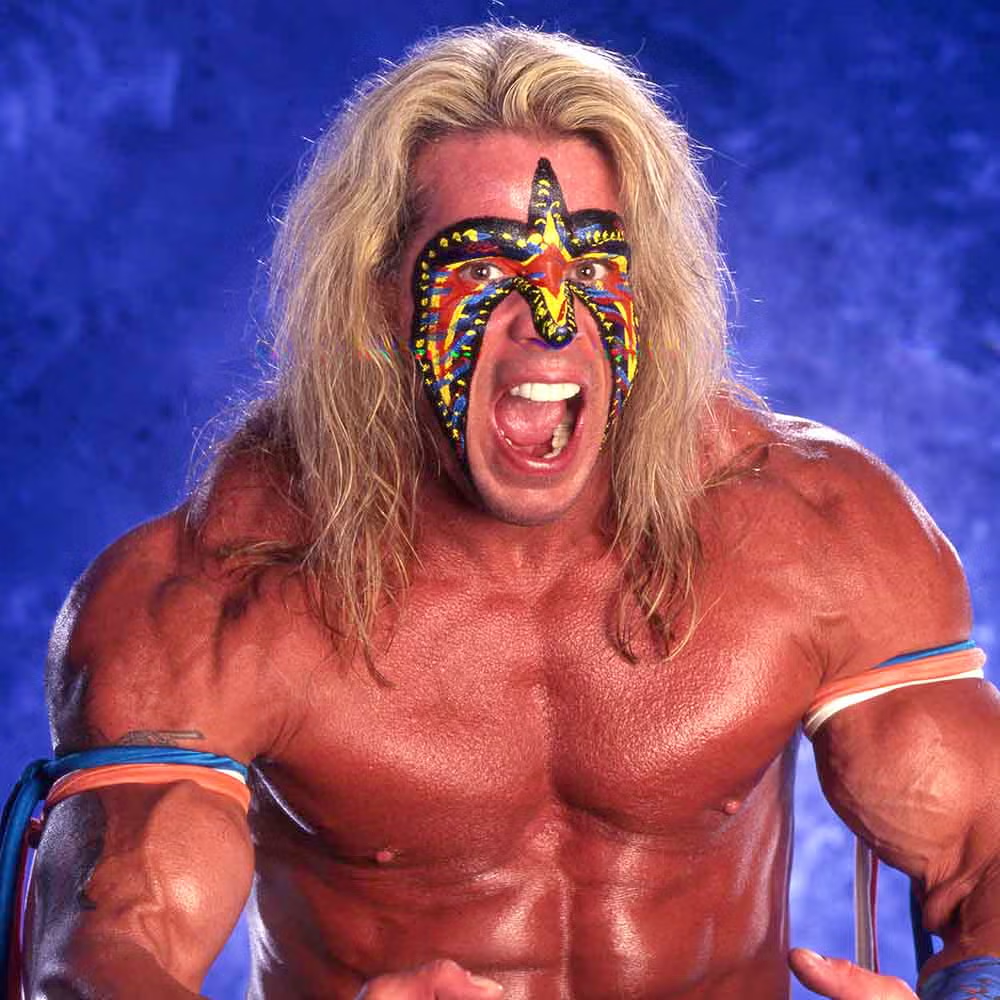
Who Was Ultimate Warrior?
Ultimate Warrior, born James Brian Hellwig, was a renowned figure in professional wrestling, known for his electrifying persona and impressive athleticism. Initially a bodybuilder, Warrior transitioned to wrestling, where he became an iconic WWE Superstar. His rise to fame was swift, marked by his memorable victory over Hulk Hogan at WrestleMania VI in 1990, solidifying his status as one of the most celebrated wrestlers of his era. Although his career was marred by suspensions and controversies, Warrior later reconciled with WWE and was inducted into its Hall of Fame shortly before his untimely death in 2014.
Early Years and Bodybuilding Career
Born on June 16, 1959, in Crawfordsville, Indiana, James Brian Hellwig was the eldest of five children. His childhood was marked by financial struggles and emotional turmoil following his father’s departure. To cope with these challenges, Hellwig immersed himself in football and weightlifting during his time at Fountain Central High School. His passion for strength training led him to pursue a bodybuilding career, and by 1984, he had captured the Mr. Georgia title. Seeking further opportunities, he moved to California to train at the famed Gold’s Gym in Venice Beach. There, he joined a fledgling wrestling team that included Steve Borden, who would later gain fame as WWE Superstar Sting.
Early Pro Wrestling Career
Warrior’s professional wrestling career began in late 1985, when he and Borden (who would later become Sting) entered the Memphis-based Championship Wrestling promotion. Initially known as the Freedom Fighters, the duo quickly adopted a more aggressive persona and became the Blade Runners, overpowering their opponents with their combined athleticism. Warrior eventually struck out on his own, joining the World Class Championship Wrestling (WCCW) promotion in Texas, where he gained significant popularity under the moniker “The Dingo Warrior.” This early success paved the way for his eventual rise to WWE stardom.
WWE Superstar and Champion
Ultimate Warrior made his iconic debut on the grand stage of World Wrestling Entertainment (WWE) in 1987, transforming into the electrifying, tasseled, face-painted figure that would become a fan favorite. Known for his chiseled physique, high-octane performances, and intense, cryptic interviews, Warrior quickly captured the attention of the WWE Universe.
Warrior’s rise to superstardom began at the inaugural WWE SummerSlam in 1988, where he demolished The Honky Tonk Man in just 30 seconds to win the Intercontinental Championship. His dominance continued as he defended his title against legends like Andre the Giant, further solidifying his position as a top draw by lifting and body-slamming the 520-pound giant.
The pinnacle of Warrior’s career came at WrestleMania VI in April 1990, where he faced the reigning heavyweight champion Hulk Hogan in the much-anticipated “Ultimate Challenge” match. Warrior emerged victorious, securing the win with his signature “Warrior Splash.” In a historic moment, Hogan passed the championship belt to Warrior in the center of the ring, marking the symbolic passing of the torch.
Suspensions and Move to WCW
Warrior’s title reign was short-lived, as he lost the championship to “Macho Man” Randy Savage and later to Sgt. Slaughter at the 1991 Royal Rumble. Although he avenged his loss to Savage at WrestleMania VII, Warrior found himself in conflict with WWE management, leading to a suspension due to a contract dispute with Vince McMahon.
Warrior made a return to the spotlight at WrestleMania VIII in April 1992, where he helped his former rival Hulk Hogan fend off an attack by Sid Justice. However, the steroid controversy surrounding WWE led to another suspension later that year after Warrior reportedly failed multiple drug tests.
Following a victorious return at WrestleMania XII in 1996, where he defeated Triple H, Warrior’s career once again suffered due to missed events, resulting in his termination from WWE. He then made his way to World Championship Wrestling (WCW) in 1998, where he briefly appeared before losing to Hogan at Halloween Havoc, ending his run with the company.
Name Change and Post-Wrestling Career
In the early 1990s, Warrior legally changed his name to “Warrior” and pursued several ventures to capitalize on his wrestling persona. These included the release of a comic book and the launch of Warrior University, a gym and wrestling school in Scottsdale, Arizona.
In addition to his entrepreneurial efforts, Warrior found a new platform as a conservative blogger and public speaker, though his controversial appearance at the University of Connecticut in 2005, which resulted in a shouting match with students, led to widespread criticism. This event was later featured in the WWE-produced documentary The Self-Destruction of the Ultimate Warrior. Warrior also created motivational videos and expressed his passion through painting in his post-wrestling years.
Personal Life
After divorcing his first wife, Shari, Warrior married Dana, whom he met at his Arizona gym. The couple had two daughters, Indiana and Mattigan.
WWE Hall of Fame and Death
In 2014, after nearly two decades of estrangement, Warrior reconciled with WWE and agreed to be inducted into the WWE Hall of Fame. During the ceremony on April 5, 2014, Warrior made an emotional address, acknowledging the challenges he faced and his journey back into the WWE family. The following night, he appeared at WrestleMania XXX and again on April 7, 2014, during Monday Night Raw, where he delivered another heartfelt speech.
Tragically, on April 8, 2014, just days after his Hall of Fame induction, Warrior collapsed from a fatal heart attack, passing away at the age of 54. His death marked the end of an era for WWE, but his legacy as one of the most charismatic and memorable figures in professional wrestling endures.
